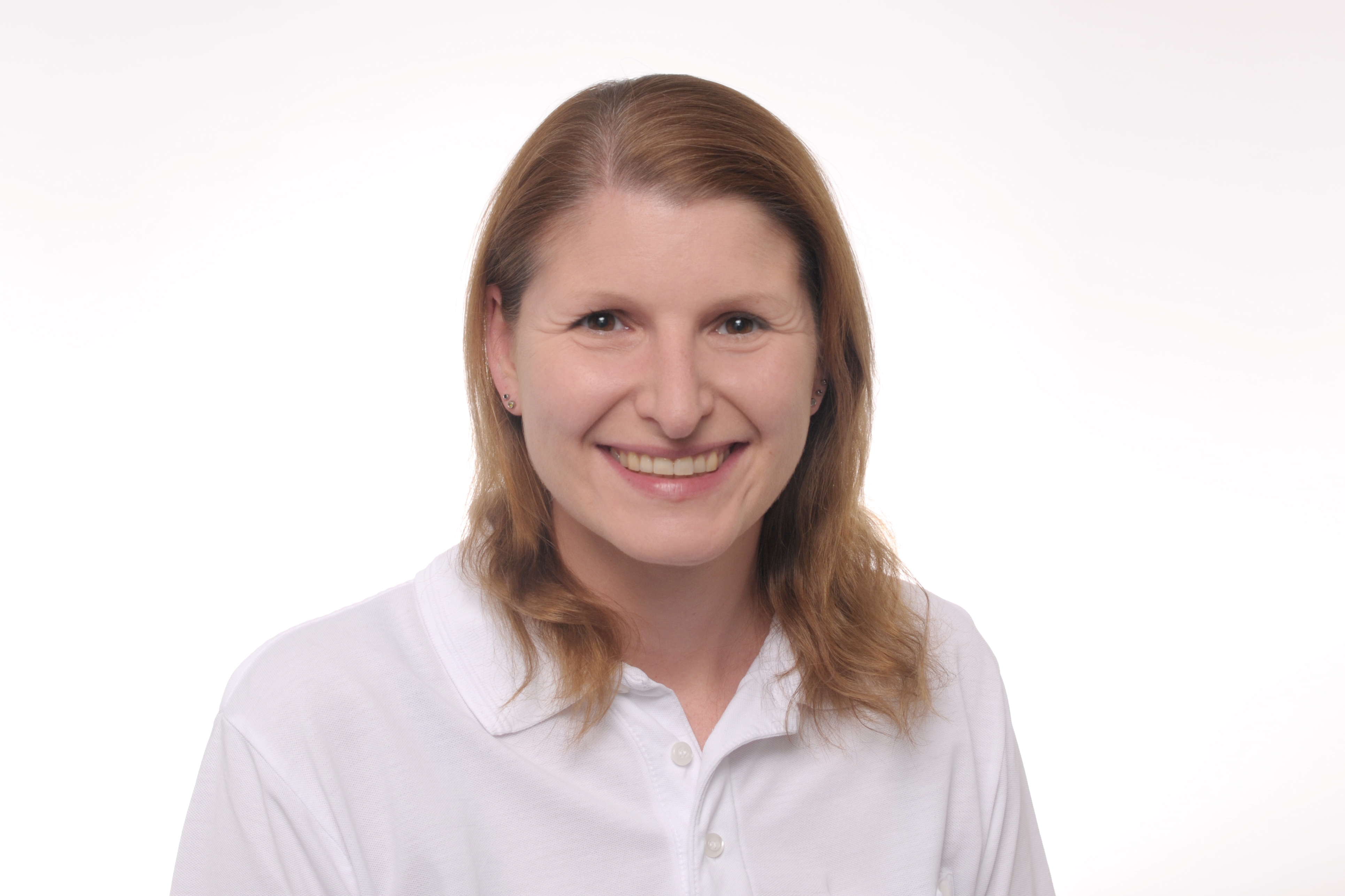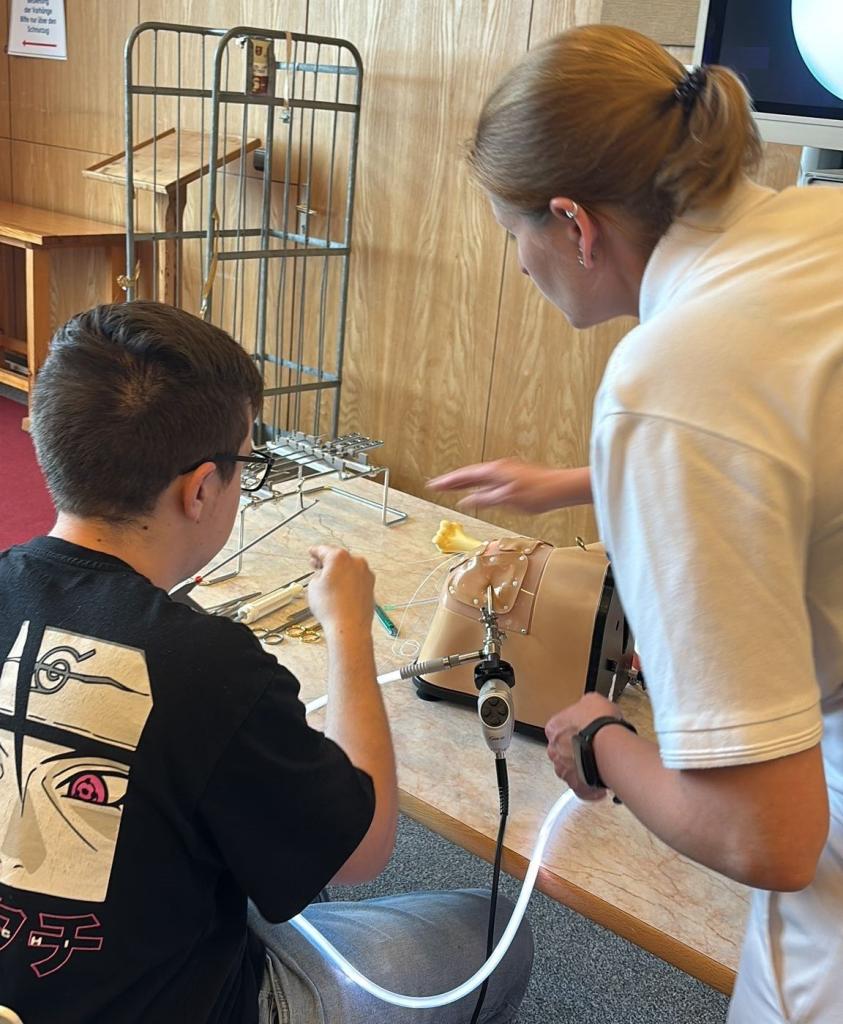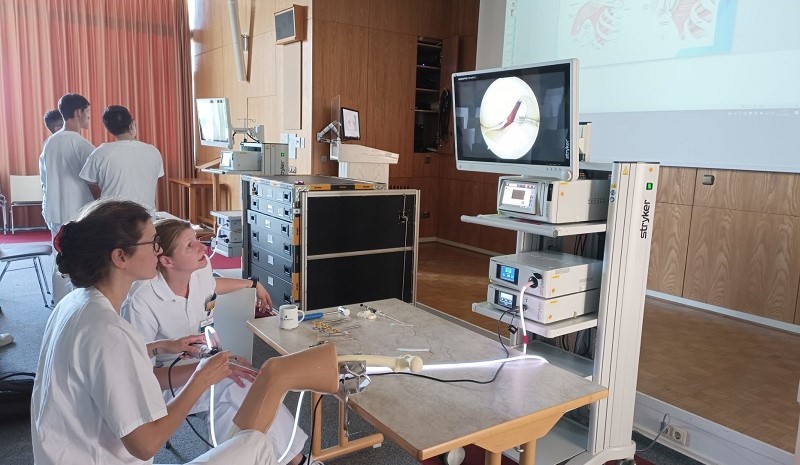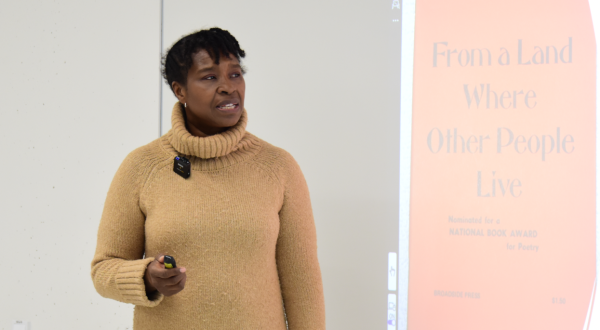Elbas slimnīcas Štādē ārste Anete Piorka: "Ķirurģija ir ļoti sarežģīta joma, taču tā sniedz lielu gandarījumu!"
Autors: Lorenss Dīce (Laurence Dietze), sadarbības koordinators, medicīnas students,
RSU Starptautisko sakaru departaments
Anete Piorka (Anette Piork) ir Elbas slimnīcas Štādē Traumatoloģijas un ortopēdijas nodaļas ārste. Papildus klīniskajam darbam viņa piedalās Rīgas Stradiņa universitātes (RSU) studentu apmācībā, vadot vairākas nodarbības ortopēdijas kursā 7. semestra studentiem un neklīniskās ortopēdijas B kursā 10. semestra studentiem.
Lūdzu, pastāstiet, kas jūs savulaik piesaistīja traumatoloģijas un ortopēdijas jomai?
Es vienmēr esmu gribējusi kļūt par ārsti. Dažus gadus pirms skolas beigšanas es piedalījos programmā Universitātes nedēļa, kas ļauj vienu nedēļu apmeklēt universitāti kopā ar tās absolventiem. Dalība programmā nostiprināja manu lēmumu pievērsties medicīnai. Darbs traumatoloģijas un ortopēdijas ķirurģijas jomā bija mans mērķis jau no paša sākuma, jo šī joma šķita visinteresantākā.

Foto no privātā arhīva
Kā nonācāt līdz pašreizējam amatam traumatoloģijas un ortopēdijas jomā?
Kā jau minēju, vienmēr esmu gribējusi strādāt par ķirurgu traumatologu. Studiju laikā es iepazinu arī citas interesantas jomas, taču tās nespēja mainīt manu lēmumu. Sākumā pāris gadu strādāju citā slimnīcā, bet viņiem nebija pietiekamas kvalifikācijas, lai es varētu pabeigt izglītību konkrētajā specialitātē. Lai sasniegtu šo mērķi, man bija jāmaina darbavieta. Tas bija iespējams Štādes slimnīcā, kur strādāju joprojām.
Ķirurģiju, īpaši traumatoloģijas un ortopēdijas ķirurģiju, bieži uzskata par specialitāti, kurā dominē vīrieši. Vai jums kā sievietei šajā jomā ir bijušas kādas īpašas grūtības, un, ja ir, kā jūs tās pārvarējāt?
Ar pirmo problēmu saskāros jau universitātē.
Visi uz tevi skatās dīvaini, kad pasaki, ka gribi strādāt traumatoloģijas un ortopēdijas jomā.
Tas dažkārt lika rokām nolaisties, īpaši tad, kad ārstes jautāja, vai esmu traka, ka strādāju šajā profesijā. Man bieži teica: “Sieviete nevar strādāt par ķirurgu!” Protams, ir ķirurģiskās procedūras, ko sievietei paveikt ir fiziski grūtāk, piemēram, protezēšanas operācijas, bet šī joma ir tik daudzveidīga, ka darba pietiek arī bez šīm procedūrām, lai gan tās ir pa spēkam arī sievietēm.
Kāds būtu jūsu galvenais ieteikums studentiem, kuri vēlas kļūt par ķirurgiem, lai palīdzētu viņiem gūt panākumus tik sarežģītā jomā?
Ķerties vērsim pie ragiem!
Ķirurģija ir ļoti sarežģīta joma, taču tā sniedz lielu gandarījumu, un, ja patiešām gribi strādāt šajā jomā, to var viegli sasniegt.
Jūs jau vairākus semestrus piedalāties RSU studentu apmācībā. Kāda ir bijusi jūsu spilgtākā pieredze darbā ar topošajiem ārstiem?
Lielu daļu studentu neinteresē ķirurģijas joma, tāpēc ir diezgan grūti viņus ieinteresēt un motivēt. Tomēr, ja studenti izrāda interesi, viņu apmācība var sniegt ļoti lielu gandarījumu.
Turklāt ir patīkami atgriezties pie pašiem pamatiem un atcerēties, kā ir būt iesācējam traumatoloģijas ķirurģijas jomā.

Anete Piorka un students mācību procesā. Foto: Lorenss Dīce
Jums ir liela pieredze darbā ar artroskopu. Vai jūs varētu izskaidrot artroskopijs pamatprincipus cilvēkiem, kas par to neko nezina?
Tā ir minimāli invazīva procedūra, ko izmanto locītavu operācijās. Tā ir mazāk invazīva nekā visas locītavas atvēršana, tomēr šīs procedūras laikā, izmantojot locītavā ievadītu kameru, iespējams apskatīt visu locītavu. Izmantojot šo metodi, ir mazāk komplikāciju un bieži vien atveseļošanās periods ir īsāks. Lielāko daļu procedūru, vai tā būtu meniska plīsuma operācija vai cīpslu refiksācija, var veikt, izmantojot artroskopiju.
Kādas pamatprasmes ir būtiskas artroskopijas apgūšanai, un kā studenti var sākt tās attīstīt?
Noder laba telpas izjūta, bet, godīgi sakot, visa pamatā ir prakse. Nemetiet plinti krūmos, ja pirmās 20 operācijas nerit pēc plāna – tas ir visnotaļ normāli. Turpiniet strādāt!

Vācijas ārste Anete Piorka māca studenti, izmantojot ceļa locītavas artroskopijas simulatoru. Foto: Lorenss Dīce
Kāda saskaņā ar jūsu pieredzi ir labākā pieeja šo prasmju mācīšanai studentiem?
Kā jau minēju, ir svarīgi trenēt šīs prasmes. Apmācība ar manekeniem ir labs veids, kā praktizēties, un es ieteiktu ikvienam to izmēģināt, ja vien ir tāda iespēja.
Kāda, pēc jūsu domām, būs traumatoloģijas un ortopēdijas jomas turpmākā attīstība, un kas jums tajā šķiet pozitīvākais?
Interesants aspekts noteikti ir jaunu materiālu, instrumentu un implantu dizainu izstrāde. Precīzāka radioloģiskā attēlveidošana sniedz lielāku atbalstu operējošajam ārstam – tas var atvieglot operāciju un uzlabot tās rezultātu. Taču, pat ja visi šie uzlabojumi ir noderīgi,
mums vienmēr jāpatur prātā cilvēka ķermeņa biomehānikas pamatprincipi, jo nav tehnoloģiju, kas to varētu izdarīt mūsu vietā.



